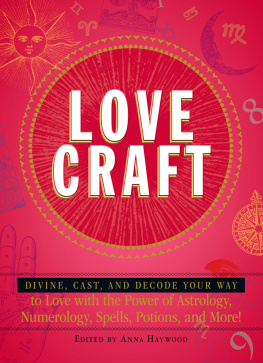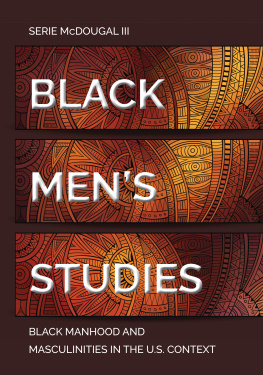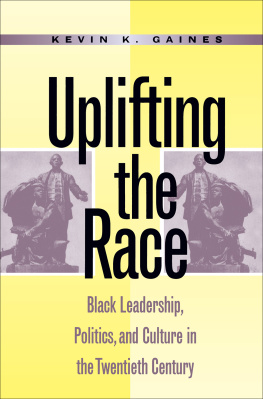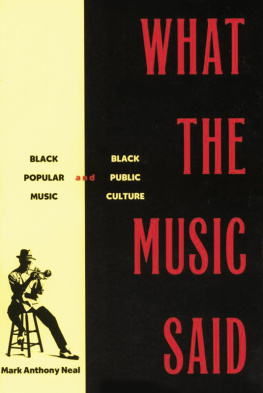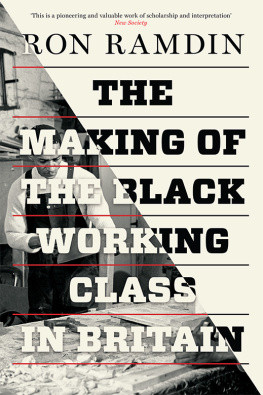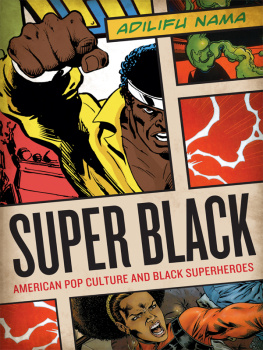Contents
Guide
Pagebreaks of the print version
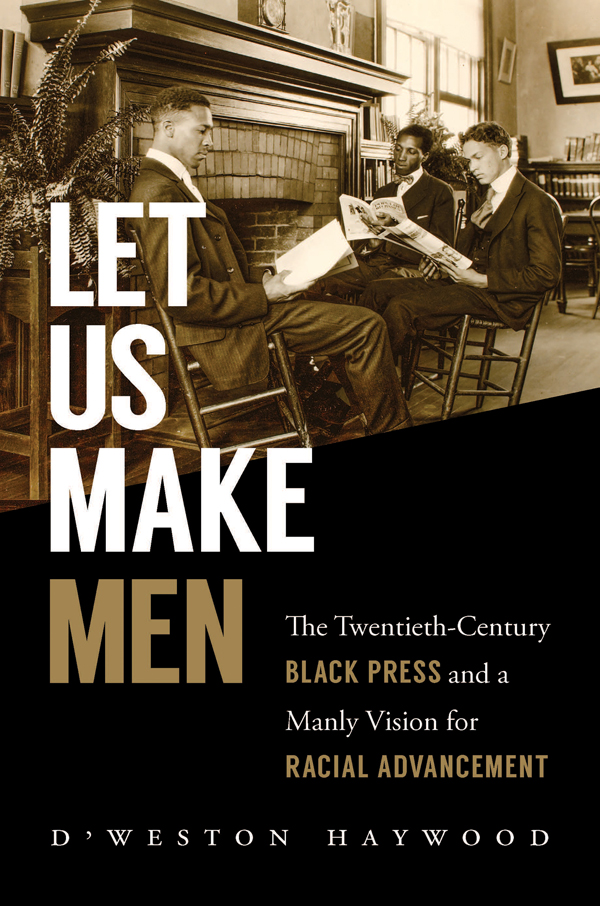
Let Us Make Men
Let Us Make Men
The Twentieth-Century Black Press and a Manly Vision for Racial Advancement

DWESTON HAYWOOD
The University of North Carolina Press Chapel Hill
This book is published with appreciation for Susan and Rusty Carter and their generous support of the University of North Carolina Press.
2018 The University of North Carolina Press
All rights reserved
Set in Charis and Lato by Westchester Publishing Services
Manufactured in the United States of America
The University of North Carolina Press has been a member of the Green Press Initiative since 2003.
Library of Congress Cataloging-in-Publication Data
Names: Haywood, DWeston, author.
Title: Let us make men : the twentieth-century black press and a manly vision for racial advancement / DWeston Haywood.
Description: Chapel Hill : University of North Carolina Press, [2018] | Includes bibliographical references and index.
Identifiers: LCCN 2018008895| ISBN 9781469643380 (cloth : alk. paper) | ISBN 9781469643397 (pbk : alk. paper) | ISBN 9781469643403 (ebook)
Subjects: LCSH : African American newspapersHistory20th century. | African American newspapersPolitical activity. | African Americans in mass mediaHistory20th century. | Men in mass mediaHistory20th century. | African AmericansCivil rightsHistory20th century.
Classification: LCC PN 4882.5 . H 39 2018 | DDC 071/.308996073dc23
LC record available at https://lccn.loc.gov/2018008895
Cover illustration: Three Black Men Reading by Fireplace (1920) by Lewis W. Hine. Courtesy of the George Eastman Museum.
To Temple. Thank you for everything.
Contents
Acknowledgments
In examining the lives, ideas, and efforts of the black men who constitute this study, subjecting them to piercing questions that probed very personal sides of their thoughts and lives, I have tried to be critical. Yet my subjects refused to let me do this freely. I have taken stock of the relationships they held to their work and some of the people in their lives, and they have often expected me to do the same, to think critically about who helped make me and this project.
I am deeply grateful to a number of people whose critical insights and support helped me produce this book. Thank you to Martha Biondi, Dylan Penningroth, and Darlene Clark Hine for their brilliance and guidance. Professor Biondis charge to just plunge into the sources was a welcome challenge I have carried with me. Thank you for being an incredible mentor and resource.
I would also like to thank Deborah Gray White, Mia Bay, Walter Rucker, Donna Murch, Rachel Devlin, and Marisa Fuentes for their encouragement and feedback during my time as a Postdoctoral Fellow in Race and Gender History at Rutgers, the State University of New Jersey. The intellectual, financial, and scholarly support the fellowship provided this project was invaluable.
Many thanks are also due to my editor at the University of North Carolina Press, Brandon Proia, as well as my anonymous readers for their time and insightful comments that helped strengthen the book.
No amount of thanks is enough for my family. Whenever the book appeared to send me on a very isolating and personal journey, I always discovered that the journey was a shared one. To my mother, Dante Haywood, and late father, David Haywood Jr.; sisters, Davida Haywood and DeVon H. Grant; grandparents, Hattie and Weston Butler and Norma and the late David Haywood Sr.; aunt, Audrey Wall; nephews, Kenneth Culbreth Jr. and Kole Culbreth; my second family, Treva Cunningham and Walter Cunningham III, Treasur and Walter Cunningham IV, Ruth McClellan, and the late Marian Huffman, I say thank you. It is my mother who has always maintained since my youth that no matter the size of the task, all one ever needs is the faith of a mustard seed. Thank you for that life lesson.
I want to thank my wife, Templemy best friend, resident scholar, sounding board, and life vest in a sea of words. I deeply appreciate you walking with me through every step of this journey. I look forward to future journeys we will take together. I could never pay you back for all I owe. But I will try.
Finally, and most of all, I must thank God, my ultimate source. I asked a lot of God in order to complete this journey. And God always answered, showing me that the greatest strength is earnednot granted.
Let Us Make Men
Introduction
What a Man Sees in Life He Sees in the Newspaper
Cato Anderson likely read the June 4, 1927, edition of the Pittsburgh Courier with great excitement. That day the Courier published his editorial Newspapers Should Take Up Race Leadership. The piece explained what he saw as the deeper role of black newspapers. Of course, its most basic function was to provide news and first hand knowledge of conditions. But its deeper role, shaping public opinion, plays a most important part in the life of a people. Where the school, church, the chautauqua and other agencies have given up the fight, the black press was about the only agency truly successful in molding public opinion and ensuring real racial uplift. For Anderson, the newspaper is the mirror of public opinion. What a man sees in life he sees in the newspaper. Because the crying need of our complex life is leadership, that type of leadership that will lead us out of the wilderness I would delegate to the newspaper the task of taking that leadership, he affirmed. The editor of the newspaper occupies a most important position in our modern life. Clearly, Anderson had an appreciation for black newspapers, shaped in large part by his own life experiences. Anderson obtained his education at Syracuse University, taught European History at Douglas High School in Baltimore, Maryland, and was a member of several black civic organizations, including a male beneficial society, a Negro civic league, and Omega Psi Phi Fraternity, a black Greek-letter fraternity. These experiences helped him recognize currents of racial leadership and uplift even in a newspaper. In many ways, he could see himself in the black press. He turned to it to express himself at a time when many black men in particular and black people in general felt they could not do so freely in any other public forum. Yet Anderson elevated the black press above other important, long-standing black social institutions. It would seem that Andersons educational and professional experiences gave him a perspective that would have been lost on the masses, but the widespread popularity of the black press suggests that many readers would have agreed with him. Certainly, black male publishers would have agreed too. In fact, Andersons editorial only reiterated several points many of them had realized decades ago when they inaugurated the modern black press. They saw something similar in the newspaper page.
Let Us Make Men: The Twentieth-Century Black Press and a Manly Vision for Racial Advancement reinterprets the twentieth-century black press as a tool of black mens leadership, public vocalization, gender and identity formation, and space for the construction of ideas of proper black masculinity that shaped the twentieth-century black freedom struggle to wage a fight for racial justice and black manhood. The book draws its title from the words of another reader, Reverend J. C. Austin, whose editorial argued for the redemption of black manhood, and referenced Genesis 1:26 to help make the point. In it God says Let us make man in our image, after our likeness. Conducting a close, gendered reading of black newspaper articles and black male publishers manuscript collections reveals that for Robert S. Abbott and John Sengstackes Chicago Defender , W. E. B. DuBoiss Crisis , Marcus Garveys Negro World , Robert F. Williamss the Crusader , and Malcolm Xs Muhammad Speaks , issues of black migration, New Negro politics, Depression-era economic challenges, civil rights protest, and urban renewal were fraught with tremendous implications for black men. The issues these pivotal moments raised signaled crises in black manhood, and, as a result, opportunities for its redemption. The reasons for this had much to do with the publishers of these papers, who shaped their columns to reflect a racial and personal quest for proper black manhood.


![Haywood - Viking: The Norse Warrior’s [Unofficial] Manual](/uploads/posts/book/98981/thumbs/haywood-viking-the-norse-warrior-s.jpg)
